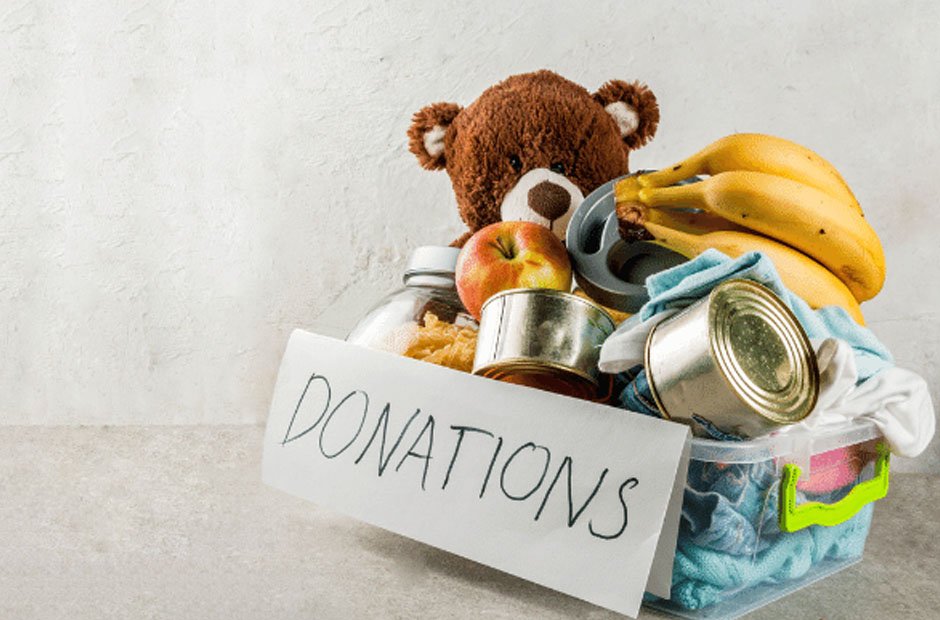Charitable organizations depend on donations to serve their communities, but not all donations help equally. Some contributions meet genuine needs and make operations easier. Others create extra work, take up valuable storage space, or simply don’t serve the populations charities are trying to help. The gap between what donors think helps and what actually helps creates challenges for organizations that want to accept generosity without wasting limited resources sorting through unusable items.
Understanding what charities actually need—and just as important, what they don’t need—makes donation efforts far more effective. This matters especially for bulk donations where someone is investing time and money into purchasing items specifically for donation. Getting it right means those resources translate directly into helping people. Getting it wrong means wasted money on items that ultimately get discarded or create logistical headaches for already-stretched organizations.
The key is thinking about donations from the charity’s perspective rather than just the donor’s perspective. What seems helpful might not be practical. What feels meaningful to give might not address actual needs. Successful bulk donation efforts start with understanding operations, constraints, and real requirements of the organizations they’re trying to support.
What Makes Bulk Donations Different
Bulk donations differ from individual donations in scale and purpose. Someone buying 100 of something or organizing a drive collecting hundreds of items needs to think differently than someone donating a few things from their closet. Bulk donations can address systematic needs in ways that individual donations can’t, but they can also create systematic problems if they’re not aligned with what organizations can actually use.
The advantage of bulk donations is consistency and volume. A charity knows they’re getting 100 usable items rather than a random assortment where quality and usefulness vary wildly. They can plan distribution knowing a certain quantity of specific items is available. Bulk donations of the right things simplify operations rather than complicating them.
The disadvantage appears when bulk donations miss the mark. A hundred unusable items creates a bigger disposal problem than five. Storage space consumed by bulk items that aren’t needed means less room for things that are. The efficiency that makes bulk donations powerful works both ways—wrong items create problems at scale.
Essential Items That Always Work
Certain items remain in constant demand across almost all charitable organizations. These are safe bulk donation choices because they address universal needs that don’t change much by season or circumstance. New socks and underwear top this list—they’re always needed, can’t be donated used, and wear out quickly. Hygiene products including soap, toothpaste, toothbrushes, and shampoo see constant demand. These basics might seem ordinary, but they’re exactly what helps most.
Durable bags for distributing items might not seem like a donation item, but they’re essential for operations. Charities need ways to give people multiple items at once that can be carried easily. Resources such as Bags in Bulk Canada provide the practical supplies that make distribution possible, covering an operational need that donors often overlook while focusing on the donated items themselves.
New winter essentials including gloves, hats, and thermal socks help during cold months. These items have clear use cases and shelf life doesn’t matter much. Food donations work well when they’re non-perishable, easy to prepare, and actually nutritious—though coordinating with organizations first ensures donated food matches their distribution capabilities and dietary needs they’re serving.
Items That Create Problems
Some common donations create more work than help. Clothing donations illustrate this clearly. While specific new clothing items work well, bags of random used clothing require extensive sorting, consume storage space, and often contain items that aren’t usable. A hundred new winter coats in requested sizes helps tremendously. A hundred bags of random used clothing from people’s closets creates a sorting nightmare where much gets discarded anyway.
Expired or nearly-expired food and medicine don’t help anyone and create disposal obligations. Items that need assembly or special handling complicate distribution. Opened or partially used products raise sanitation questions. Donations of things that were broken or unusable to the donor in the first place burden charities with disposal costs. These sound obvious, but they represent common problems organizations face regularly.
Seasonal mismatches cause issues too. Summer clothes donated in winter sit in storage taking space until they’re seasonally appropriate—if they’re still in good condition by then. Holiday-specific items donated after holidays miss the window when they’re useful. Timing donations to match when items are actually needed makes them far more valuable.
Understanding Capacity Limits
Charitable organizations have finite storage space, staff time, and distribution capabilities. Even donations of useful items can overwhelm if volume exceeds what organizations can handle. A small shelter might genuinely need winter blankets but can’t accommodate a donation of 500 of them if they only serve 50 people and have limited storage. Coordinating bulk donations with organizations ensures volume matches their capacity.
This is why communication before donating matters, especially for bulk donations. A quick conversation with the organization confirms they actually need what’s being donated, can handle the quantity, and have distribution plans. This prevents the situation where well-meaning bulk donations arrive unexpectedly and create storage or logistical problems despite being theoretically useful items.
Different organizations have different capabilities. Large distribution centers can handle massive bulk donations. Small direct-service organizations might prefer smaller, more frequent donations they can turn around quickly. Understanding the specific organization’s operations helps match donation approaches to their reality.
The Administrative Supplies Angle
Running donation programs requires administrative supplies that rarely get donated but are constantly needed. Collection bins, sorting tables, label makers, storage containers, distribution bags, sign-in sheets, and organizing supplies all support the work of getting donations to people who need them. These unglamorous items make operations possible but typically come from organizational budgets rather than donations.
Bulk donations of organizational supplies can be just as valuable as bulk donations of items for distribution. A hundred durable bags for distribution, sorting bins for organizing donations, or quality storage containers for managing inventory all address real operational needs. These items might not feel as meaningful to donate as directly helping people, but they’re essential infrastructure that enables the direct help to happen efficiently.
Coordinating Larger Donation Efforts
Organizing a donation drive or making substantial bulk purchases requires coordination with receiving organizations from the start. This means discussing what’s needed, in what quantities, delivered when, and in what condition. It means understanding any restrictions or preferences. It means confirming delivery logistics and timing. This coordination effort ensures donations actually help rather than creating problems.
The conversation should cover practical details. What sizes are needed if donating clothing? What specific items are priorities right now? Are there items the organization specifically can’t use? What’s the timeline when items would be most useful? How should items be packaged or organized for delivery? Getting these details right transforms good intentions into genuinely helpful donations.
Documentation helps too. Knowing what was donated, when, and what was actually distributed provides feedback for future efforts. If certain items get used immediately while others sit in storage, that information guides better donation choices going forward. Building relationships with organizations over time allows understanding their changing needs and making donation efforts more targeted and useful.
Seasonal Considerations for Winter Needs
Winter increases demand for specific items while creating urgency around others. Cold weather essentials become critical rather than just helpful. Warm coats, thermal layers, winter boots, gloves, hats, and blankets address immediate safety needs in cold climates. Bulk donations of these items during fall and early winter match when demand spikes.
Winter also strains budgets for people already struggling financially. Heating costs rise. Holiday expectations create financial pressure. School breaks change children’s meal access. Understanding these seasonal factors helps target bulk donations toward what addresses winter-specific challenges rather than general needs that exist year-round.
But seasonal items should still match what organizations can actually use. Confirming that donated winter items match the climate and population served prevents donations of heavy winter gear to regions with mild winters or children’s snow pants to organizations serving primarily adults. Matching donations to specific seasonal needs of specific populations maximizes their usefulness.
Making Bulk Donations Count
Effective bulk donations require research, coordination, and understanding of charitable operations beyond just deciding to help. They require setting aside assumptions about what helps and learning what organizations actually need. They require thinking about logistical realities like storage, distribution, and capacity limits. When done well, bulk donations can address systematic needs and support operations in ways that scattered individual donations can’t match. When done poorly, they create work for organizations already stretched thin. The difference lies in approaching donation efforts as a partnership with charities rather than one-way giving based on donor preferences.



